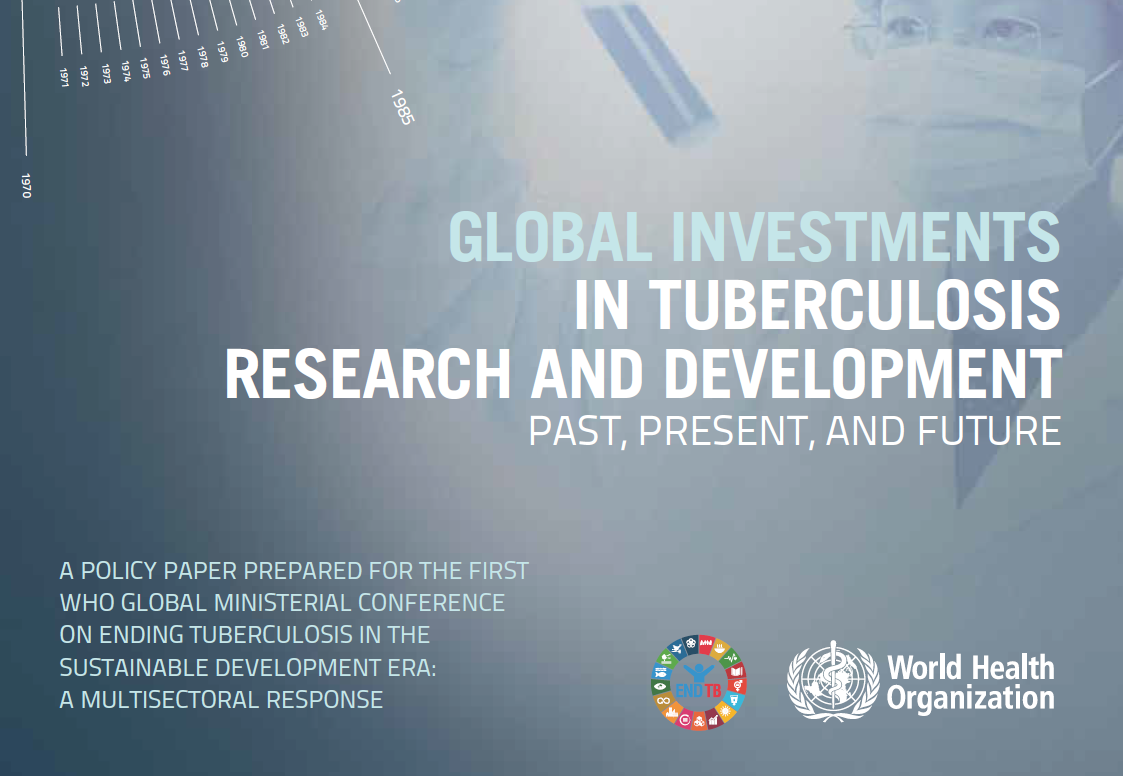
WHO policy paper calls for increased investments in TB research to reach end TB targets.
28 November 2017 | Geneva: The World Health Organization released a policy paper during the First WHO Global Ministerial Conference on Ending TB on 17 November, highlighting the persistent investment gaps in TB research and development, and the cost of inaction. The policy paper, Global investments in Tuberculosis research and development: past, present and future was developed together with various partners, academics, donors and civil society groups, and presented during the ministerial panel session on Science, Research and Innovation, where the Russian Federation also launched the newly established BRICS TB research network.
“TB research is sine qua non to improving the health outcomes of people with TB, and positively transforming health-care services with better interventions and products,” said Dr Mario Raviglione, Director of the WHO Global TB Programme. “This policy paper clearly articulates our vision on the urgent need for research to reach the end TB targets, as well as the funding and structural requirements that are necessary to operationalize this vision, The findings from this report are expected to inform the debate at both national and global levels on prioritizing the policy approaches that are urgently needed to advance TB research and development (R&D) in the era of the SDGs.”
Report findings
The analyses of the past decade of TB research funding presented in this policy paper highlighted that only one third of the investment needs for TB research and development are currently being met. TB accounts for nearly 2% of disability adjusted life-years (DALYs) and 2% of deaths globally, but receives only 0.25% of the estimated US$ 265 billion spent on medical research annually. Moreover, funding is highly concentrated: 30 institutions from a handful of countries account for over 90% of TB R&D expenditures in any given year. Declining investments by industry over the past 5 years, coupled with flat expenditures from major public and philanthropic funders, mean that there is a need to bring new resources into the TB research field.
In addition, the analysis in this paper of new products developed and brought to market for TB, shows that the TB pipeline has lagged behind when compared to progress made in HIV and malaria, suggesting that limited funding has slowed the pace of TB research. This has had devastating consequences for people with and at risk of TB, who urgently need better tools for preventing, diagnosing and treating the disease in all its forms. Taking into account these existing gaps, the report argues for the urgent development of a Global Strategy for TB Research to foster collaboration, increase research financing and improve efficiency in TB R&D.
“The analysis in the paper emphasizes how some of the research funded in the past has delivered benefits to patients and influenced policy- and decision-making,” said Dr Christian Lienhardt, Team Leader, Research for TB Elimination at WHO. “However, it also describes how little is being invested in TB R&D so far in comparison with other diseases that also affect poor populations. We need increased commitment for TB research in countries and globally, to enable the achievement of the end TB targets. ”
BRICS TB research network
Dr Tereza Kasaeva, Deputy Director of the Department of Medical Care, Ministry of Health of the Russian Federation who presented on the BRICS TB research network during the Ministerial Conference, said, “The BRICS TB research network, formally announced by his excellency President Vladimir Putin during the conference opening is an important platform to advance collaboration, mobilize resources and revamp implementation of TB R&D by the countries carrying the highest burden of the disease.”
For more information on WHO’s policy paper please access the link here: Global investments in Tuberculosis research and development: past, present and future
Source: WHO